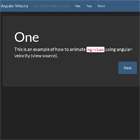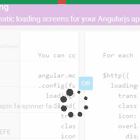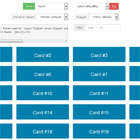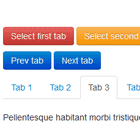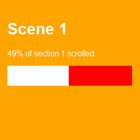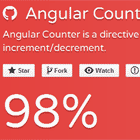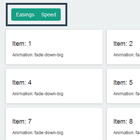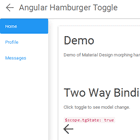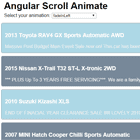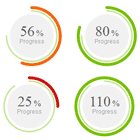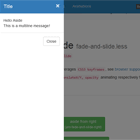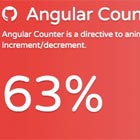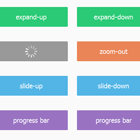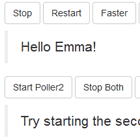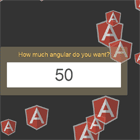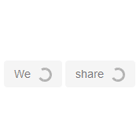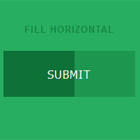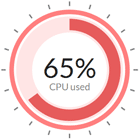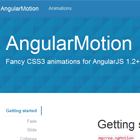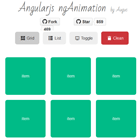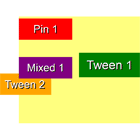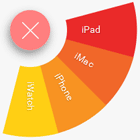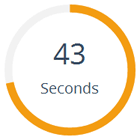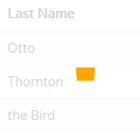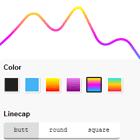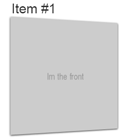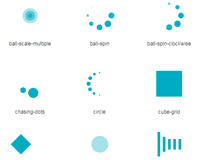Angular Velocity
AngularJS ngAnimate integration for the Velocity animation library's UI pack plugin.
Getting Started
Install with Bower
bower install angular-velocity --save Include Scripts
<script src="bower_components/velocity/velocity.min.js"></script> <script src="bower_components/velocity/velocity.ui.min.js"></script> <script src="bower_components/angular-velocity/angular-velocity.min.js"></script>N.B. angular-velocity assumes that the Angular core and the additional
ngAnimatemodule is loaded.ngAnimatecan be found in the AngularJS 'additional modules'.
Install with npm
npm install angular-velocity --save Include Scripts
<script src="node_modules/angular-velocity/angular-velocity.min.js"></script>N.B. When installing from npm, it is assumed that VelocityJS will be installed and loaded before Angular Velocity.
N.B. angular-velocity assumes that the Angular core and the additional
ngAnimatemodule is loaded.ngAnimatecan be found in the AngularJS 'additional modules'.
Declare Angular Dependency
angular.module('your-app', ['angular-velocity']);Usage
This module declares Angular animations for each of the animations in the UI pack of Velocity following a standardised naming convention.
From Velocity, the period in a transition or callout name is replaced by a hyphen. For example, transition.slideUpIn becomes velocity-transition-slideUpIn.
This animation name is then used as a class name on any element you want to animate with the ngAnimate system, for example:
<div class="velocity-transition-slideUpIn" ng-show="someCondition"> I've been animated with Velocity and Angular! </div>Opposites
Angular Velocity defines opposite animations for all animations that have a 'directional' component. For every 'In' transition, there is an opposite 'Out' transition that can be used.
These are defined with the prefix velocity-opposites- and will work with ngAnimate's enter & leave, and ngShow & ngHide.
For example:
<div ng-view class="velocity-opposites-transition-slideUpIn"> I enter with a transition.slideUpIn.<br> I leave with a transition.slideDownOut. </div>Different Enter & Leave Animations
Angular Velocity defines an enter animation for every 'In' transition, and a leave animation for every 'Out' transition.
These are defined with the prefixes velocity-enter- and velocity-leave-, which work with ngEnter & ngShow, and ngLeave & ngHide respectively.
For example:
<div ng-view class="velocity-enter-transition-slideRightIn velocity-leave-transition-slideDownOut"> I enter with a transition.slideRightIn.<br> I leave with a transition.slideDownOut. </div>You do not have to use an enter and a leave transition, they are independednt and you can specify them separaetly if desired.
Velocity Options
Setting Velocity options is possible by defining the data-velocity-opts attribute on your animated element. This is an Angular-aware expression, so you can pass objects, bindings, or references to scope objects:
<div class="velocity-transition-slideUpIn" ng-show="someCondition" data-velocity-opts="{ duration: 5000 }"> I've been animated with Velocity and Angular! </div>Stagger
Staggering is supported for ngEnter and ngLeave animations. This works especially well with ngRepeat:
<ul> <li class="velocity-transition-bounceRightIn" data-velocity-opts="{ stagger: 350 }" ng-repeat="item in items"> {{ item }} </li> </ul>Complete Function
The Velocity
completecallback can be passed in the options and will be executed against your element's scope in a digest cycle.
Contributing
Please feel free to fork, push, pull and all that other good Git stuff!
Compression
uglifyjs angular-velocity.js -c -m -r '$,angular' --source-map angular-velocity.min.map -o angular-velocity.min.js Disclaimer
This project is not associated officially with either AngularJS or Velocity. It is just a little utility that was quickly thrown together to bridge an animation-shaped gap.
Thanks
- @albertogasparin for allowing registration of custom transitions after script load time
- @MikaAK for jQuery dependency removal
- @tvararu for updates to work with Velocity 1.x
- @rosslavery for an example of how to access UI pack animations
